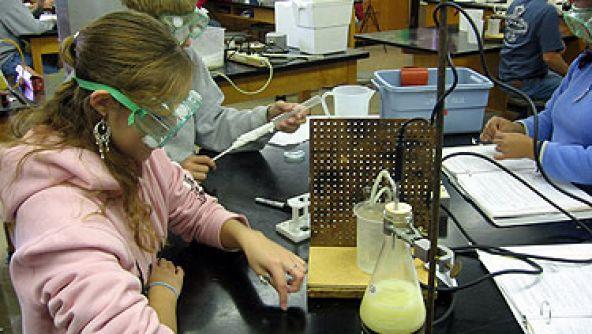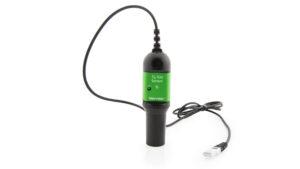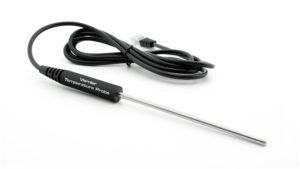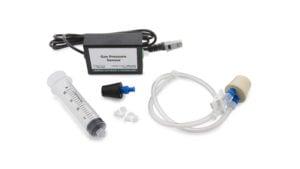Students in Jerry Jensen’s biology classes have learned to love spinach. Of course, they’re not actually eating it. Armed with Vernier technology and data-collection software, Jensen’s students in Minnesota’s Luverne Independent School District use the green stuff to illustrate photosynthesis and cellular respiration in plants.
Jensen has been teaching science at Luverne for 33 years. Naturally, in that time he’s seen the teaching and learning model change dramatically. He believes tools such as Vernier’s are invaluable in the classroom.
“Good data are often very difficult to obtain, but the Vernier devices are extremely efficient.”
“I don’t use these products just for technology’s sake; I use them because they really work!” Jensen says. “Good data are often very difficult to obtain, but the Vernier devices are extremely efficient. And the labs they provide promote more questions at every turn.”
To study respiration, Luverne students used to submerge aquatic plants in water in front of a light, and then attempt to count the bubbles coming out of the plants’ base. Now, says Jensen, they simply stash some spinach in a jar and cover it with foil. A Vernier O2 Gas Sensor then efficiently manages the data-collection process.
“… The kids see that plants carry on respiration. That’s usually a hard thing for high school students to comprehend … but Vernier illustrates it clearly.”
Says Jensen: “The Vernier sensor shows that the plant’s oxygen level has decreased, which demonstrates respiration, and that oxygen is being used. Then they take the foil off, let the light shine through, and voila – the oxygen level increases, demonstrating photosynthesis. With the sensor connected to a computer these phenomena are immediately graphed in Logger Pro, so the kids see that plants carry on respiration. That’s usually a hard thing for high school students to comprehend … but Vernier illustrates it clearly.”
Jensen’s students participate in “Ethanol Week” as enthusiastically as students in other schools celebrate Spirit Week. In this experiment, the class first grinds corn with mortar and pestle, then spends a full week tracking the enzymatic changes that eventually convert the corn into alcohol. Students insert Vernier Temperature Probes into the solution. With the help of an applet that Jensen wrote, the Vernier probe then records the solution’s temperature every two minutes. Finally, Logger Prosoftware graphs the transformation from a liquid mixture to separate distillates (another lab uses Vernier Gas Pressure Sensors to identify the sugars that are metabolized by yeast).
“With Logger Pro the data is right there on the screen,” notes Jensen. “Also, students can use the text annotation feature to describe what’s going on at every step. It’s so much easier and more efficient than what we were doing in the past. The kids really think it’s cool!”
“What I especially like about the Vernier labs is that they come as Word documents, which means I can customize them in any way desired.”
Jensen’s pretty fond of the Vernier products himself. “What I especially like about the Vernier labs is that they come as Word documents, which means I can customize them in any way desired,” he says. “For example, the text asks what results the student gets with an experiment. I add in other questions that say ‘How do your results compare with the rest of the class – were they different?’
“I love the fact that Vernier’s labs aren’t just recipe,” Jensen adds. “They give you a great base for the experiments, yet you can edit the lessons quite easily to fit whatever your class might be doing, or might want to explore. And isn’t that what inquiry-based learning is all about?”
Jensen has just purchased a Vernier Spirometer, which he plans to use in a lab on airflow and lung volume in his AP Anatomy and Physiology classes. He looks forward to devising other innovative uses for Vernier’s products in the future. “Vernier frees students from having to do repetitious things – like entering data points into spreadsheets – so they can focus on learning,” Jensen finishes. “Best of all, the ability to use different measuring devices mirrors the way industry uses technology.”




